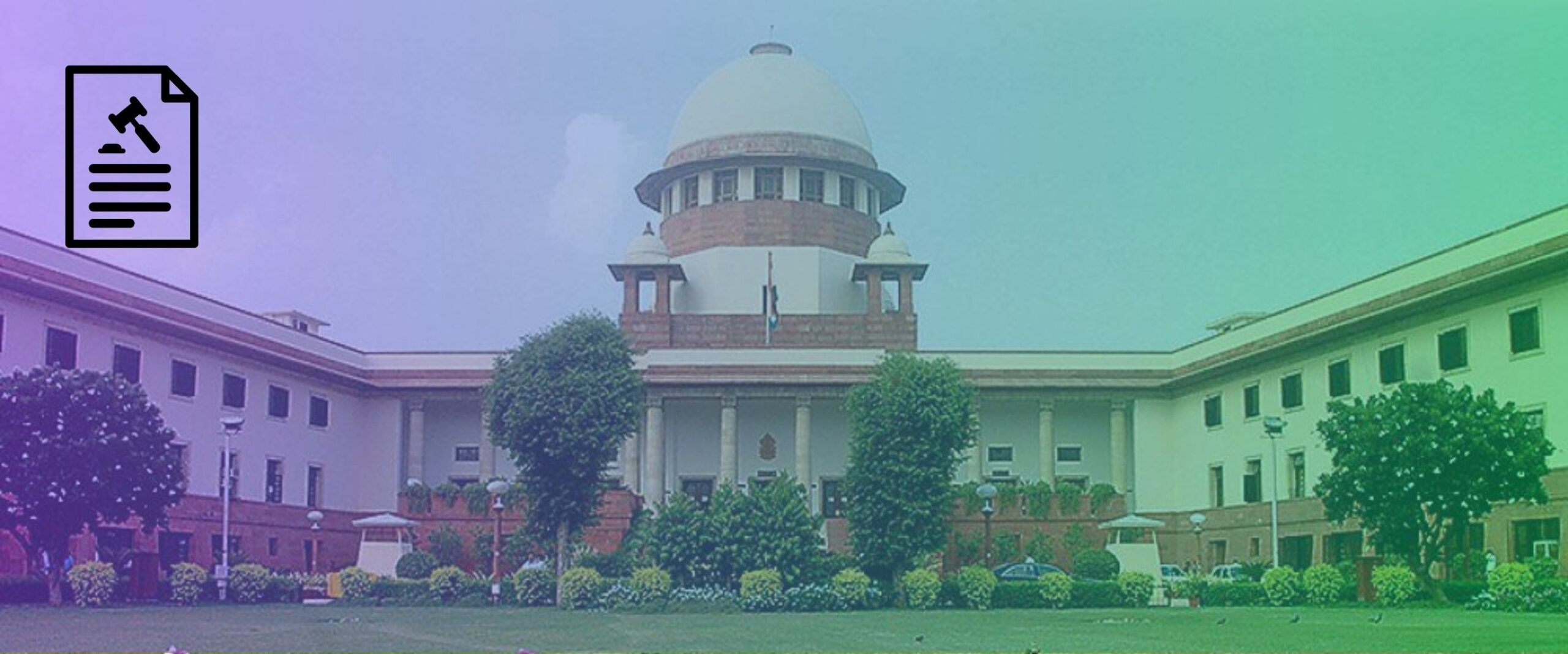Analysis
‘Irreparable Injury’ from Interim Orders of the Supreme Court
Interim Orders protect the interests of all parties while a case is pending. In some cases, the SC struggles to maintain that balance.

In late June last year, the fundamentals of Maharashtra’s political structure shook and shifted. A rebel group within the Shiv Sena comprising 39 of their 55 MLAs broke their allegiance to then Maharashtra Chief Minister Mr. Uddhav Thackerey. They claimed that their values and ideologies were far more true to what the Shiv Sena stood for, and they were the ‘real Shiv Sena’.
What ensued was a complicated web of questions of law and constitutional interpretation, with a simple question at its heart. Who had the legitimate power to govern the State of Maharashtra? The Supreme Court was brought in on all issues. Nearly 10 months later, the final questions remain unanswered. However, the landscape of Maharashtra’s politics is unrecognisable. How did the Maharashtra government change overnight, when its legitimacy remains undecided even today?
Interim Orders of the Supreme Court Allowed the Shinde Faction to Take Over
On June 28th 2022, the rebel faction led by present CM Mr. Eknath Shinde sought the SC’s involvement in the disqualification proceedings initiated against them. Already, this was unusual, as the Court does not typically intervene in issues that are ongoing in the House. The Court then issued an Order giving more than standard time of 7 days to the rebel MLAs, to respond to the disqualification proceedings, to 12 days. Effectively, this allowed the rebel faction to move further with their agenda. With the support of Mr. Devendra Fadnavis of the BJP, the Shinde faction approached the Governor, who called a Floor Test to determine whether Mr. Thackeray still enjoyed the support of the House. The second, more pivotal, stage of the SC’s involvement began here.
On June 29th, the Thackeray faction immediately challenged the floor test, seeking a stay order. They asked—how can a group of MLAs whose very position in the House has been challenged, be allowed to vote? Justices Surya Kant and J.B. Pardiwala heard arguments till 9:00 PM that evening, and ultimately refused to stay the Floor Test. The Order stated that ‘the proceedings of the trust vote… shall be subject to the final outcome’ of the larger case.
Immediately, Mr. Uddhav Thackeray resigned. Unopposed, Mr. Eknath Shinde became the Chief Minister of Maharashtra. The initial challenge pending before the SC was set to be heard before a Constitution Bench. 10 months later, on March 16th 2023, the Bench completed hearings and reserved judgement, with the verdict expected in the following months. During this time, Maharashtra has been governed by the Shinde faction, in alliance with the BJP.
SC’s Interim Orders Had an Enduring Effect on Maharashtra
When parties believe that there could be ‘irreparable injury’ caused in a case, they may approach the Court seeking action for the interim period, as the case is being heard. For instance, if a demolition order is challenged, parties may seek an interim order to halt demolition until the case is decided. The Court may grant relief if such irreparable injury is evident from a first glance at the case. The relief itself, however, is not a final Order, and hence must not disadvantage either party and their claim in the case.
In Maharashtra, the Interim Order had far reaching consequences. After a post election crisis in 2019, a new alliance of Shiv Sena, Nationalist Congress Party, and the Indian National Congress governed the state. The SC’s refusal to stay the floor test in its Interim Order shifted this structure, gave the State a new Chief Minister, and facilitated a new BJP-Shiv Sena alliance. Opposition parties have called this an ‘undemocratic’ and ‘unethical’ power-grab.
Refusal to Grant Interim Relief Causes Irreparable Damage
In the Shiv Sena dispute, an Interim Order of the Court paved the way for a significant change in the Maharashtra government. However, the Court’s resistance to entertain a plea for Interim Order may also cause grave injury to litigants. This is true in the Hijab Ban challenge, where despite multiple requests to hear the case, or provide interim relief to students, the SC has refrained from intervening.
On October 13th, 2022, the SC delivered a split verdict on the Hijab ban, sending the case back to the Chief Justice who would assign a new, larger bench to hear the case. Since then, however, the case has remained still. On several occasions, including in February this year, the petitioners approached the Bench seeking an Interim Order to allow Muslim girl students to wear their headscarves and appear for exams. Chief Justice D.Y. Chandrachud stated that he would consider listing the case soon. A tangible Order, however, was not on the cards.
Without the Court’s Interim Order, the hijab ban is effectively upheld for this round of exams. Arguably, this causes ‘irreparable injury’ to Muslim girl students who lost yet another year of schooling.
In simple terms, Interim Orders are the Court’s tool for offering temporary relief while it decides on larger issues to give a permanent resolution. This relief or lack thereof, however, often causes more harm than good to the litigants, bringing significant onus on the Courts to carefully, yet efficiently, consider these cases.
